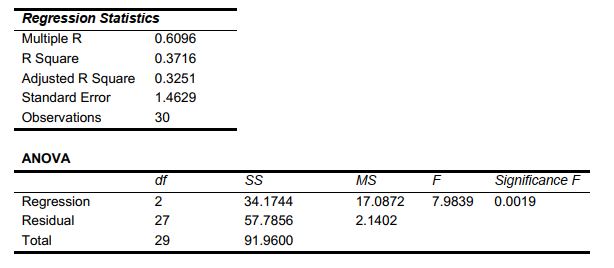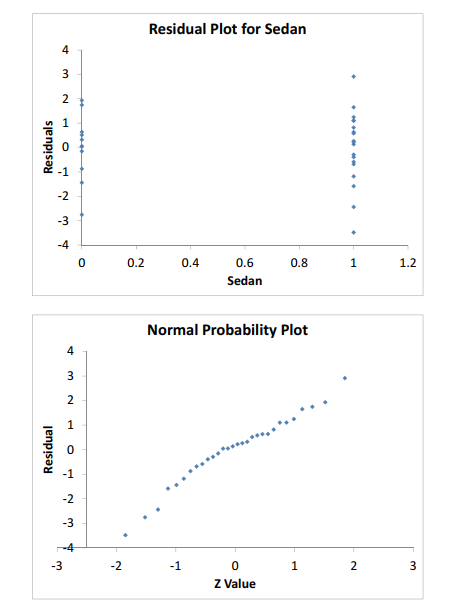SCENARIO 14-16 What are the factors that determine the acceleration time (in sec.) from 0 to 60 miles per hour of a car? Data on the following variables for 30 different vehicle models were collected: Y (Accel Time): Acceleration time in sec. X₁ (Engine Size): c.c. X₂(Sedan): 1 if the vehicle model is a sedan and 0 otherwise The regression results using acceleration time as the dependent variable and the remaining variables as the independent variables are presented below. 
 The various residual plots are as shown below.
The various residual plots are as shown below. 
 The coefficient of partial determinations
The coefficient of partial determinations  are 0.3301 and 0.0594 respectively. The coefficient of determination for the regression model using each of the 2 independent variables as the dependent variable and the other independent variable as independent variables
are 0.3301 and 0.0594 respectively. The coefficient of determination for the regression model using each of the 2 independent variables as the dependent variable and the other independent variable as independent variables  are, respectively, 0.0077 and 0.0077.
are, respectively, 0.0077 and 0.0077.
-Referring to Scenario 14-16, the errors (residuals)appear to be right-skewed.
Definitions:
Physical Object
An entity that exists in the physical world and can be perceived by the senses.
Manufactured Object
An item or product that has been created or produced through a manufacturing process, typically involving machinery and human labor.
Toy
An object designed for children to play with, often aiding in learning and development through entertainment.
Ball
A round object typically used in games and sports, which can vary in size, material, and design.
Q2: Referring to Scenario 15-5, what is the
Q4: Referring to Scenario 17-2, which region has
Q18: Referring to Scenario 16-13, the best autoregressive
Q30: Referring to Scenario 15-5, what is the
Q71: Some business analytics involve starting with many
Q87: Referring to Scenario 17-6, what is the
Q99: If a group of independent variables are
Q129: Referring to Scenario 16-4, exponential smoothing with
Q165: Referring to Scenario 13-12, the p-value of
Q334: Referring to Scenario 14-18, there is not